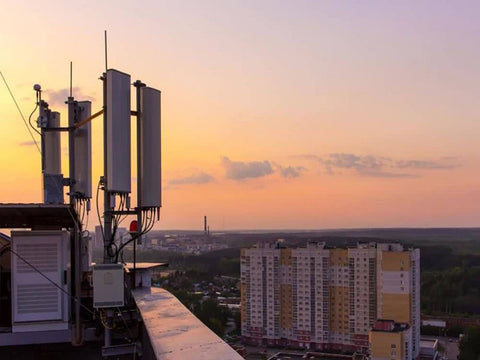News — cell phone booster
Remote Radio Head, an Integrated Radio Frequency (RF) Unit
May 30, 2016
At the base of a cellular tower there is a climate controlled shelter six feet tall where the base transceiver station (BTS) equipment is housed. The BTS enables wireless communication between the cellular network and mobile user. The BTS on the ground is connected to antennas on the top of the tower with coaxial cable. This architecture has not changed in decades. It was however time for alternatives due to efficiency and costs starting to become increasingly important to wireless operators. One such alternative solution is a base station that is distributed. In this configuration, most of the base station...
Carrier Aggregation Feature of LTE Advanced Networks
May 27, 2016
A powerful feature of LTE Advanced, carrier aggregation, is the next big step in the evolution of LTE networks. It is being adopted across the globe at a rapid pace as it increases the performance of wireless networks significantly. Wireless operators using carrier aggregation gain the advantages of better peak user throughput, more efficient use of spectrum and greater flexibility in increasing overall cell capacity. Users benefit by getting higher speed data connections consistently and this leads to the overall quality of experience being improved. Network operators using carrier aggregation can create bigger channels from spectrum blocks that are not...
Quadrature Amplitude Modulation (QAM) for Network Operators
May 26, 2016
QAM controls digital information when it is transmitted between two points by enabling analog signals to transmit digital data efficiently. It also enables more bits to be transmitted in the same period, effectively increasing the bandwidth. QAM is a modulation scheme that changes the amplitude (power level) of two signals when data is transmitted. The first signal is in phase with the data that comes in, while the second is out of phase by 90 degrees. How QAM is referred to, is based on the number of bits of information encoded in a time period. Eight bits for example defines...
Multimedia over Coax Alliance (MoCA) for in-Home Networking over Coaxials
May 25, 2016
Homeowners can pause a movie they are watching on a TV, go to another room and continue the movie from the same place on another TV. This technology is known as MoCA 2.0 and it follows a standard created by the Multimedia over Coax Alliance. MoCA technology was developed in USA during the year 2004 and it allows in-home networking over coaxial cable. Coaxial cable has traditionally been used to bring cable television signals into homes. MoCA 2.0 allows users to download HD programming to their set top box. That same content can then be sent to another room in the house....
Intelligent Buildings are Connected and Efficient
May 24, 2016
Intelligent buildings were first mentioned in the early 1980s, but a globally acceptable definition of an intelligent building's attributes has not been established yet. Although various organizations have attempted to do this, there are numerous definitions, each with varying level of detail and a different emphasis on selected aspects of building intelligence. In spite of this, it is clear that an intelligent building is both connected and efficient. All connected buildings have a communications infrastructure that is integrated and supports wireless and wired applications and networks. It also enables person-to-machine, person-to-person and machine-to-machine communications, both inside the building and with the...






